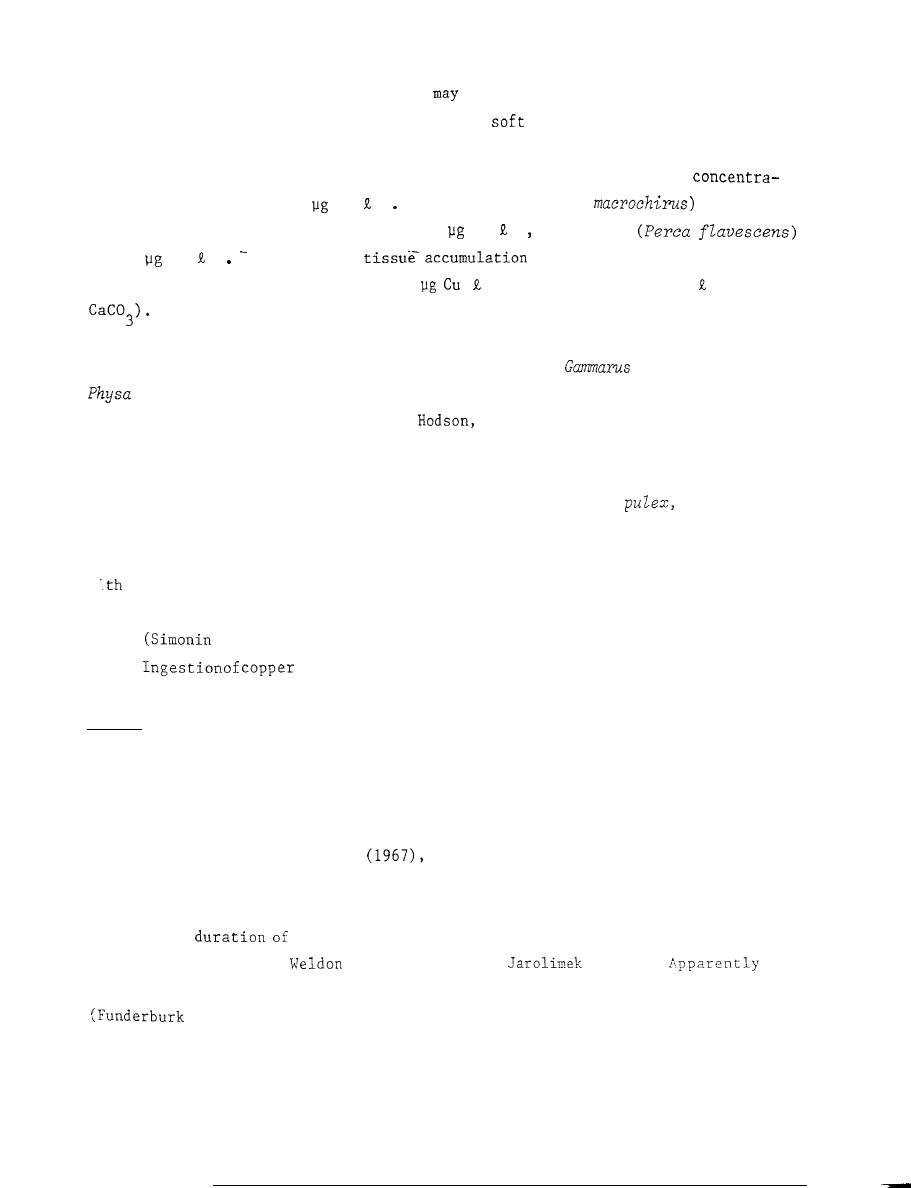
decay.
Hypolimnetic dissolved oxygen
fall sharply.
Copper is a highly
toxic metal to animal groups, especially in
water of low organic content
Some fish, particularly salmonids and
Iodson, Borgmann, and Shear 1979).
walleye, are very sensitive to copper, and effects will appear at
-1
Bluegills (Lepomis
will
tions between 10 and 20
Cu
-1
exhibit sublethal effects at 40 to 160
Cu
and perch
-1
Significant
of copper occurs in blue-
at 40
Cu
-1
-1
in soft water (45 mg
as
gills exposed to between 40 and 160
Persistent use of copper could produce extinctions of fish species in
a particular reservoir due to effects on reproduction and larval stages.
Some
fish food organisms, including Daphnia (Cladocera),
(Amphipoda),
(Mollusca), and some insects, are also extremely sensitive to copper
(Benoit 1975; Birge and Black 1979;
Borgmann, and Shear 1979;
Ingersoll and Winner 1982; Harrison, Knezovich, and Rice 1984; Collvin 1985;
The elimination or reduction in popula-
Blaylock, Frank, and McCarthy 1985).
tion density of algae-grazing zooplankton, such as Daphnia
may account
for the rebound in phytoplankton density that can occur after a copper appli-
It should be noted that the use of chelated copper in combination
cation.
the herbicide diquat, a treatment technique to attempt to control both
rooted plants and algae at once, greatly enhances the chemicals' toxicity to
trout
and Skea 1977).
in potable water apparently will not produce copper
toxicosis in humans (Scheinberg 1979).
Diauat
Diquat, a bipyridilium salt, is known to be an effective herbicide, but
is quickly deactivated in turbid water through sorption to inorganic parti-
Even a rainstorm that introduces turbid water shortly after application
cles.
Diquat persistence of up to 160 days in the mud has
may reduce effectiveness.
and Birmingham and Colman (1983) have
been noted by Frank and Comes
found that chronic applications could lead to sufficient desorption of
"loosely bound" diquat from sediments to produce phytotoxic conditions in the
water.
its effectiveness ranges from weeks to an entire
The
1964, Schenk and
1966).
summer (Blackburn and
its
mode of action is to inhibit photosynthesis and stimulate respiration
The recommended dose ranges from 0.5 ppm for
and Lawrence 1964).
165



 Previous Page
Previous Page
